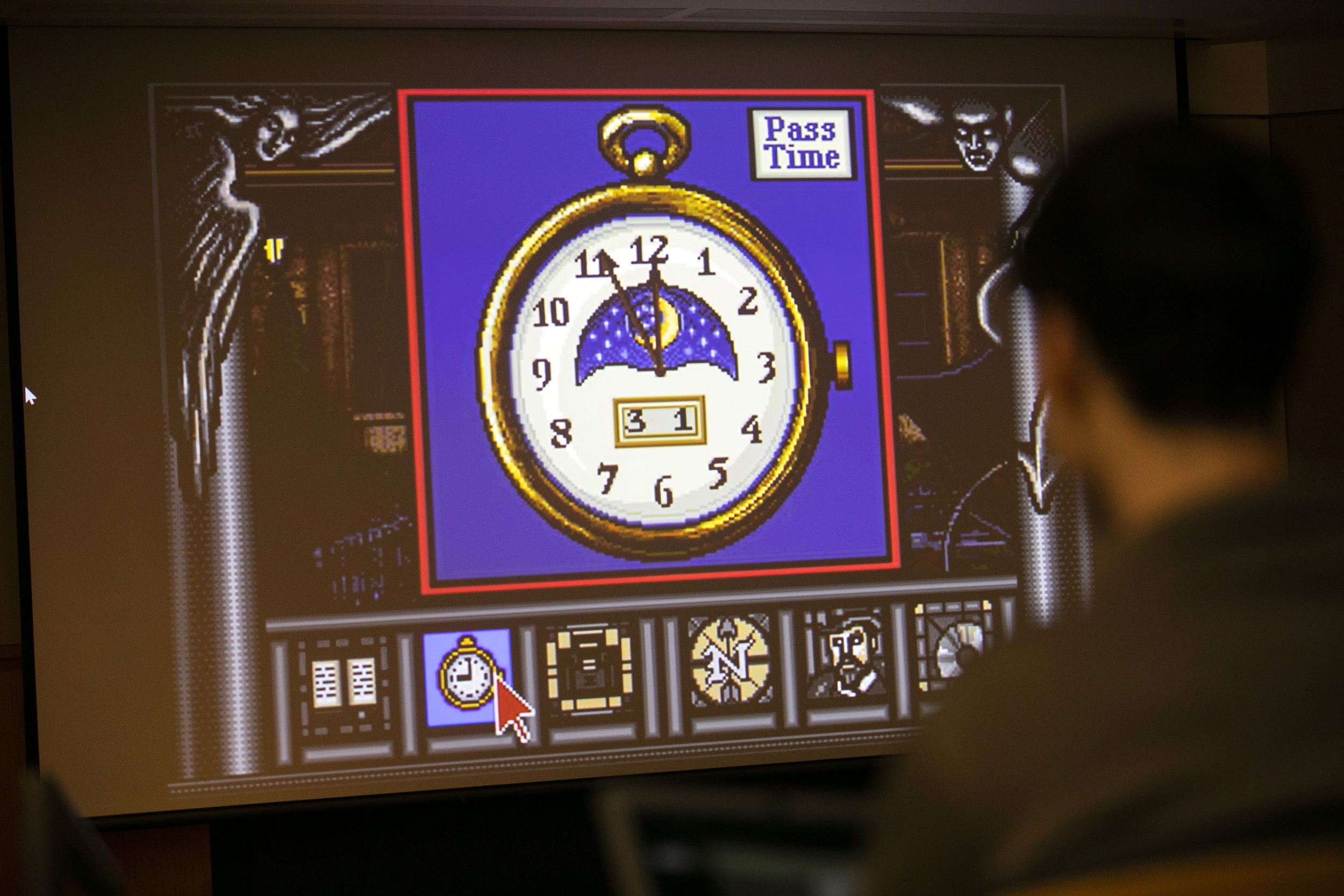
A new English class on video game storytelling explores “Dracula Unleashed” from 1993.
Stephanie Mitchell/Harvard Staff Photographer
Time for homework. Where’s my Nintendo Switch?
Students analyze video-game story narratives in popular new English class
Willa Fogelson grabs her Nintendo Switch most Monday nights, dims the lights, and plays a video game for a few hours. The first-year from Los Angeles has always loved playing and gets to explore a new title each week.
The best part? It’s her homework.
Fogelson is taking an English class being offered for the first time this semester, “English 189v.g: Video Game Storytelling.” About 100 students signed up, a level of interest that surprised the professor, Vidyan Ravinthiran, a poet and author. In hindsight, perhaps it shouldn’t have.
“There are just loads and loads of people playing. It is a really big part of our culture,” Ravinthiran said. “There’s this real excitement about the subject matter. And you can really see that when [students] start discussing it.”
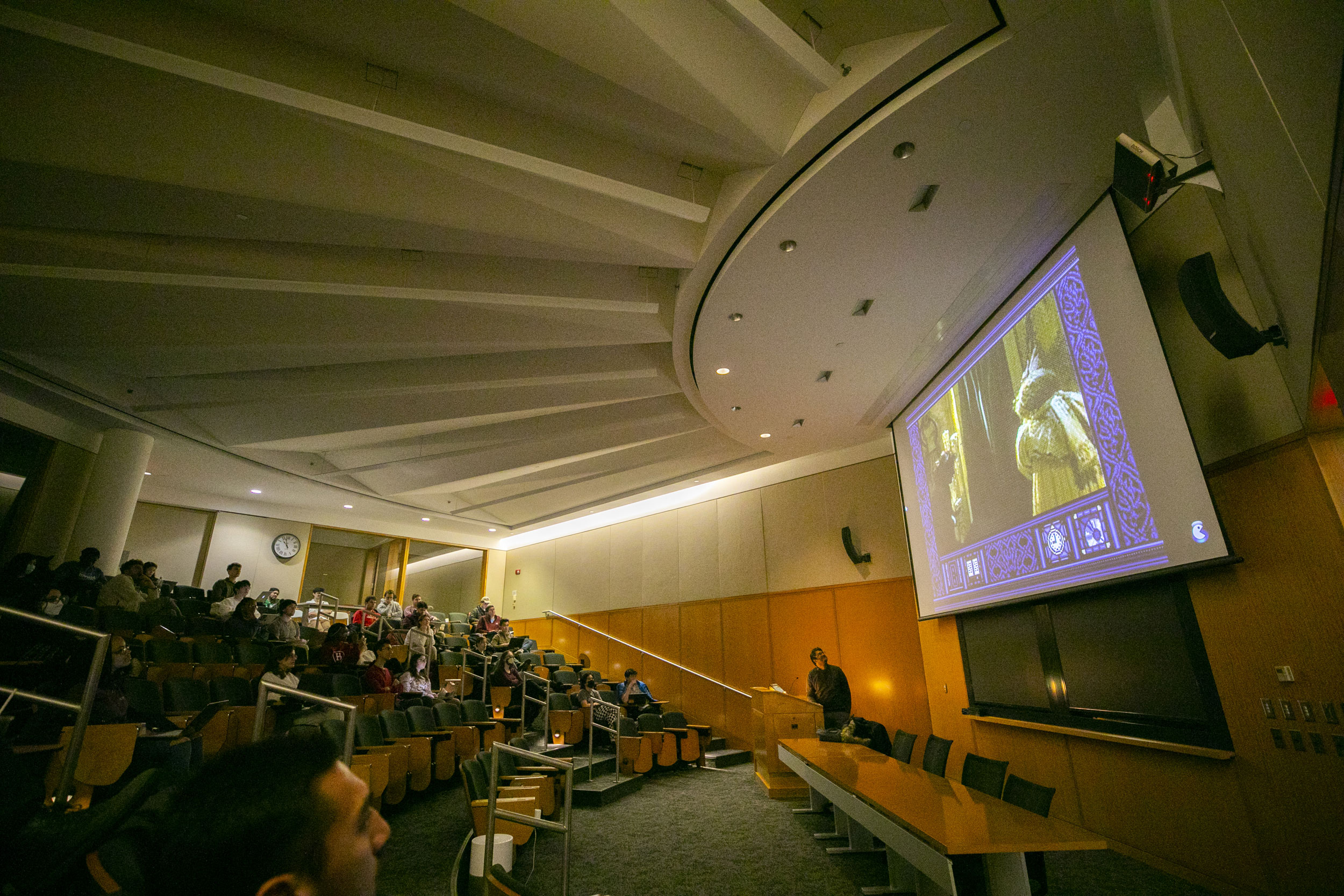
About 100 students signed up for the course.
Stephanie Mitchell/Harvard Staff Photographer
According to a study commissioned by the Entertainment Software Association, two-thirds of Americans play video games, and 76 percent of players are over the age of 18. And part of the appeal is the game narratives. “I personally think video game storytelling has some of the most potential in telling wide types of stories,” said Tess Carney ’23, a cognitive neuroscience concentrator who is taking the class.
Certainly, Hollywood has taken notice. Games have served as inspirations for dozens of movies and television shows in recent years — most recently the critically acclaimed hit HBO series “The Last of Us,” a dystopian drama about the survivors of a global plague.
“I personally think video game storytelling has some of the most potential in telling wide types of stories.”
Tess Carney ’23
None of this is lost on the academy. In a recent class Ravinthiran discussed some of the growing critical scholarship on the subject. He brought up the idea of ludonarrative dissonance, which occurs when the actions of a game’s characters don’t exactly line up with the narrative. Students engaged in a discussion of games they’ve played where this has occurred, citing examples of characters who are supposed to be on a time-sensitive quests, but spend the whole game completing meaningless “side quests.”
They also talked about issues of gender, be it the problem of the voyeuristic “male gaze” that pervades the historically male-dominated industry, or the lack of design diversity and the sexualization of female characters. All this developing terminology and discourse is exciting for humanities studies, as it’s giving language to a huge part of today’s pop culture.
“It felt like, like, ‘Oh, this is a bunch of stuff that I’ve noticed before, but … I can’t put my finger on it,’” said Carney. “The nice part about formal verbiage is it’s a more exact term for something that presumably already existed.”

“There’s this real excitement about the subject matter,” said Professor Vidyan Ravinthiran.
Stephanie Mitchell/Harvard Staff Photographer
For students like Fogelson, the class has been a great way to combine a longtime form of entertainment with her professional pursuits. A math concentrator, she sees video games as an outlet for both her love of math and her passion for storytelling. She plans to pursue an internship in the video game industry this summer.
“Video games began as exclusively this mode of enjoyment for me, something to spend my time doing that brought me happiness,” she said. “Once I started expanding my library of games, I started becoming more serious about seeing them as a piece of art.”
In the class, students are assigned a game for the week — often indie games, but sometimes a blockbuster title. On Mondays, Ravinthiran talks about various themes and elements that emerge in a specific game, such as pace, music, the use of suspense, plot twists, setting, or sexuality. Little about the storyline is revealed, but students read reviews, listen to interviews by the game creators, or study related poetry or other forms of literature. Then they play the game as part of their homework and return Wednesday to discuss the experience.
“Often these stories have lots of twists and turns, and I don’t want to give them away in the Monday lecture,” Ravinthiran said. “I kind of want to see what it’s like for the students to really be surprised by those games and see how the plots affected them.”
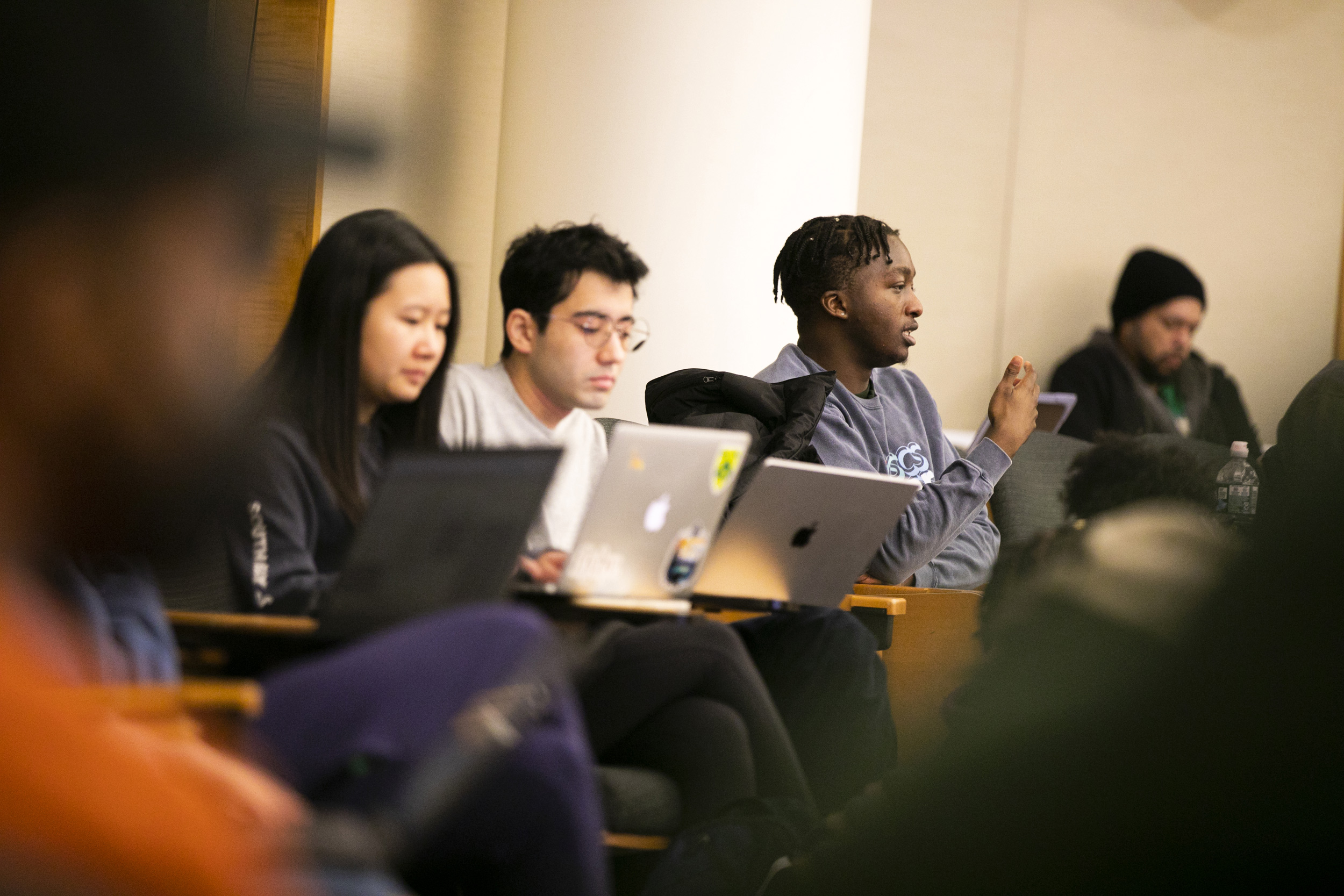
Kudana Gwatidzo ’24 participates in a class discussion.
Stephanie Mitchell/Harvard Staff Photographer
One game on the course list is “Everybody’s Gone to the Rapture.” Players find themselves in a sleepy town in the English countryside where everyone has gone missing. The player’s job is to figure out what happened. There’s an element of drama in the serene, with similar vibes to the movie “Hot Fuzz,” jokes Ravinthiran, referring to a hit 2007 British satire of American action blockbusters that follows a series of murders in a West Country village.
Carney was skeptical at first, finding the directions unclear, the premise less than compelling, and the pace slow, but eventually she was won over.
“The environment was just so nice to interact with that I didn’t mind kind of wandering around aimlessly,” she said. “I love that kind of storytelling where you get these little emotional scenes and you have to put them together, and it feels like an organic way of having insight into [the characters’] lives.”
Another game, “Dys4ia,” tells the story of the game’s creator and her experience as a trans woman. Fogelson said “Dys4ia” highlighted how the platform can be used to channel empathy and understanding for experiences that might be different than the player’s own lived experience.
“It was the first time I’d really seen a video game as exclusively being an optimized mode of storytelling,” Fogelson said. “In making it a game, there’s a physicality that requires you to be involved … That game transformed my perspective.”
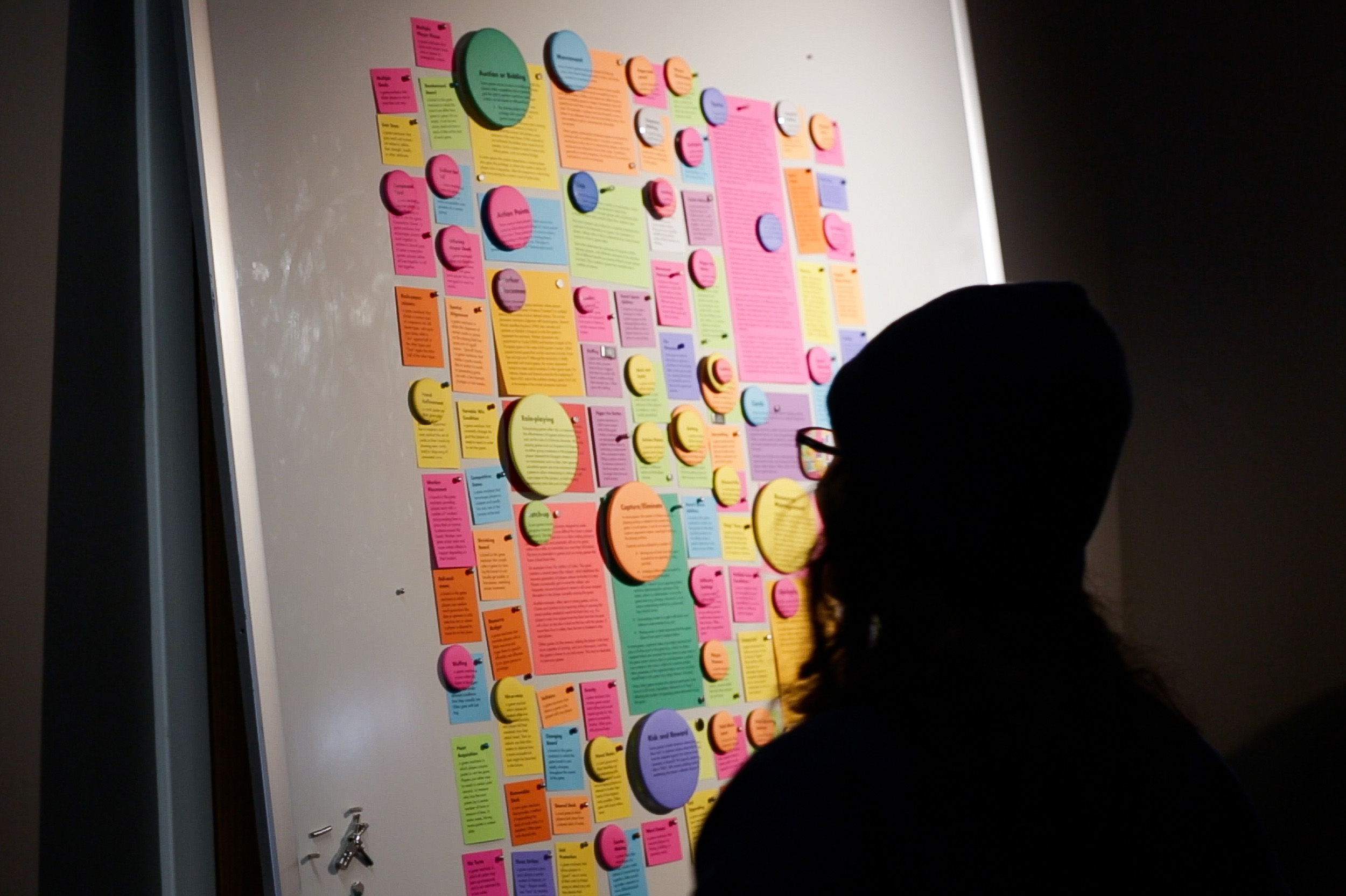
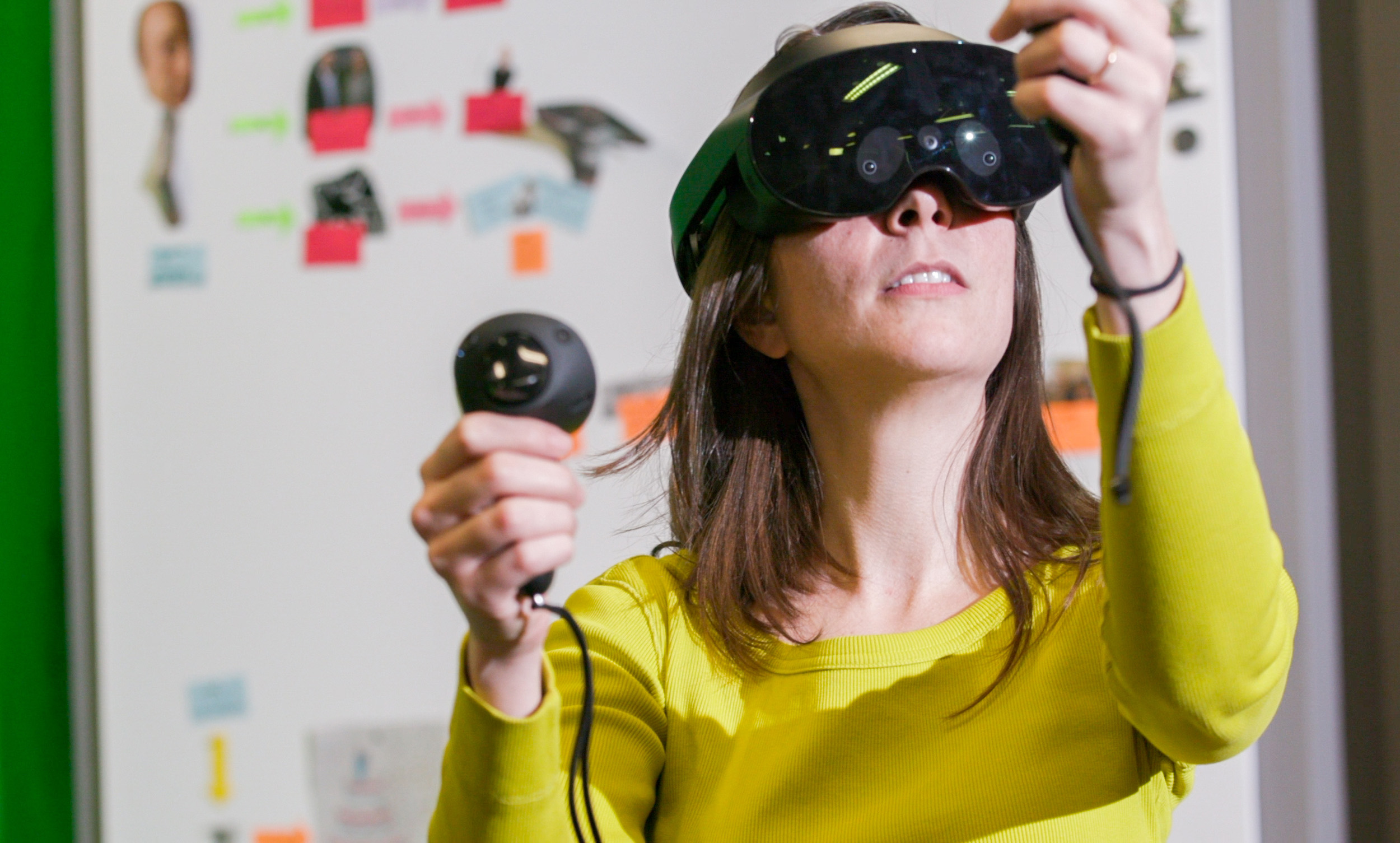
In a Bok Center Learning Lab workshop, a display outlines the complexities of game mechanics. Christine D’Auria, the lab’s assistant director, demos the Meta Quest Pro.
Images courtesy of Bok Center Learning Lab
As part of the curriculum, students attended a workshop hosted by The Bok Center’s Learning Lab, which sought to provide insight into the technical side of gaming. One station was set up to teach students how to code their own games using Unity, a development platform. Another allowed students to try out VR headsets, consoles, and equipment, seeing firsthand how different technology can affect player experience. And yet another had students cutting images from newspapers and magazines to construct game narratives, forcing them to choose between more linear storylines or ones that branch out into many potential endings.
For Ravinthiran, it’s exciting to see students take an activity they love and transform it into academic discussion.
“The pleasure that we take in stories, whether we read them in books or we follow them on the screen or we play through them in video games, that’s a very big part of people’s lives,” Ravinthiran said. “What I would like my students to see is that there is an organic relation between experiencing forms of creativity and analyzing them.”







